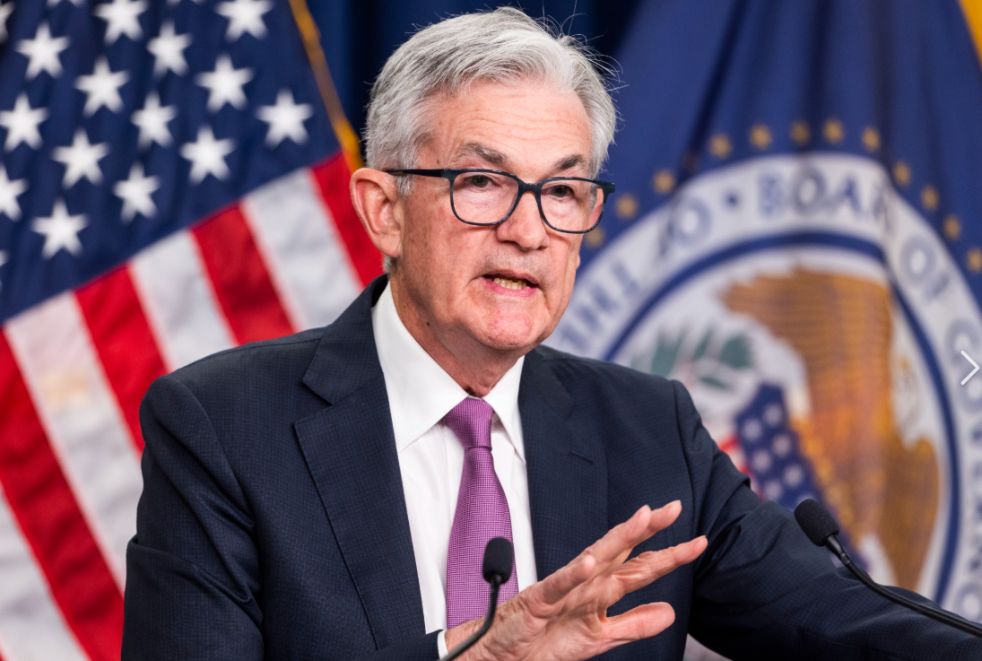The Federal Reserve's interest rate decision and Powell's hawkish remarks have sent shockwaves through both traditional financial markets and the cryptocurrency world.
At 12:00 am on October 30, East 8th District time, the Federal Reserve announced a 25 basis point cut in the federal funds rate target range to 3.75%-4.00%. This marks the second consecutive rate cut following September's cut, and the fifth rate cut since September 2024.
Meanwhile, the Federal Reserve also decided to end quantitative tightening (QT) on December 1. However, what surprised the market most was Powell's "hawkish" stance on a December rate cut.

I. Detailed Explanation of the Interest Rate Decision
This Federal Reserve meeting passed the decision to cut rates by 25 basis points with a vote of 10 in favor, 2 against, presenting a rare "hawk-dove duality" scenario.
● Kansas Fed President Schmid supported keeping rates unchanged, while Fed Governor Milan advocated for a 50 basis point cut. This two-way divergence marks the third time since 1990 that policymakers have simultaneously expressed support for both looser and tighter monetary policy at the same meeting.
● The Federal Reserve stated in its announcement, "Available indicators suggest that economic activity is expanding at a moderate pace", while acknowledging that "job growth has slowed this year, the unemployment rate has slightly increased", and "inflation remains relatively high." The committee believes that "downside risks to employment have increased in recent months."
Person/Camp | Position | Core Views and Statements | Voting Result |
Mainstream Camp | Support a 25 basis point rate cut | Believe it is necessary to balance inflation and employment risks. Economic activity is expanding moderately, job growth has slowed and the unemployment rate has slightly increased, but inflation remains high. Given the change in risk balance, a rate cut was decided. | 10 votes in favor |
Jeffrey Schmid | Hawkish Opposition (Opposed to rate cut, supports keeping rates unchanged) | Believes the US economy remains resilient. | 1 vote against |
Stephen Milan | Dovish Opposition (Advocates a 50 basis point rate cut) | Believes employment should be supported more aggressively | 1 vote against |
II. Ending the Balance Sheet Reduction Plan
In addition to the rate decision, the Federal Reserve also announced an important decision—to end balance sheet reduction (QT) on December 1.
● The FOMC statement clearly stated: "The Committee decided to end the reduction of its aggregate securities holdings on December 1."
● Powell explained, "Money market pressures require immediate adjustment of balance sheet operations", and pointed out that "there are clear signs that it is time to stop quantitative tightening."
Federal Reserve Balance Sheet Adjustment Plan
Adjustment Aspect | Specific Measures |
Ending QT | Decided to end the reduction of overall securities holdings on December 1 |
Treasury Handling | All principal of held Treasuries will be rolled over through auction |
MBS Handling | Maturing agency debt and MBS principal will be reinvested in short-term Treasuries |
III. Powell's Hawkish Remarks
Despite the rate cut, Federal Reserve Chairman Powell's remarks at the press conference were interpreted by the market as hawkish. His comments on the possibility of a December rate cut touched a nerve among investors.
● Powell made it clear, "The market's expectation of another rate cut in December is 'far from a done deal'", emphasizing, "There is significant disagreement on what action to take in December, and whether to cut rates further in December is far from certain."
● He further explained, "In the absence of data, it may be necessary to be more cautious; missing economic data may be a reason to pause rate adjustments."
● This statement directly affected market expectations, with traders subsequently lowering their bets on a December Fed rate cut, with the probability dropping sharply from 90% before the meeting to 65-71%.
IV. Violent Market Reaction
Powell's hawkish remarks triggered immediate turmoil in financial markets, with significant volatility in both traditional and cryptocurrency markets.
Comparison of Major Asset Market Performance
Asset Class | Performance |
US Stocks | Plunged intraday, Dow down 0.16%, Nasdaq up 0.55%, S&P 500 closed flat |
US Dollar Index | Soared sharply, turning from loss to gain |
US Treasury Yields | 2-year Treasury yield surged to 3.59% |
Gold | Spot gold fell below $3,950/oz |
Cryptocurrency | 130,000 traders liquidated in the past 24 hours, with liquidations totaling $560 million |
In the cryptocurrency market, bitcoin dropped sharply in the short term, with nearly 130,000 traders liquidated in the past 24 hours, and the liquidation amount reaching about $560 million.
V. Analysis of the Impact on the Crypto Market
The Federal Reserve's decision has had multiple effects on the cryptocurrency market, mainly reflected in liquidity expectations, trading dynamics, and investor sentiment.




● From the perspective of liquidity transmission, rate cuts should lower dollar financing costs and benefit risk assets. However, Powell's cautious stance on further rate cuts suppressed market risk appetite, causing leveraged funds to quickly exit the crypto market.
● Historically, lower interest rates usually encourage investors to explore unknown fields such as digital finance. When traditional investment yields decline, capital often flows into cryptocurrencies, boosting overall market vitality.
● However, while this increase in liquidity is beneficial for market health, it also introduces volatility. DeFi platforms are likely to see a surge in activity as investors chase higher returns in a low-rate environment.
VI. Future Policy Outlook
The Federal Reserve's future policy path will mainly depend on two factors: economic data released after the end of the government shutdown and the actual trend of inflation.
● Powell has acknowledged that the lack of data caused by the government shutdown makes decision-making more complex for the Fed. If the shutdown leads to a lack of data, causing officials to face very high uncertainty about the economic outlook, "this may be a reason to remain cautious when considering another rate cut."
● It is worth noting that the Federal Reserve also faces political uncertainty. US President Trump is expected to announce a new Fed chair nominee by the end of the year, a decision that could further affect the Fed's independence and future policy direction.


